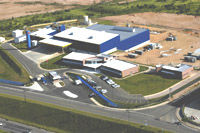Rising demand from diverse process industries supports steady growth in global valves and actuators market
market earns $49.18 billion in 2014
Advertisement
Surging demand from various process industries, government regulations on emission control and the spiralling need for resources like water and power will support steady, long-term growth in the world valves and actuators market. The rising demand for resources, globally, will fuel market expansion even as investments in growing economies like China and India positively impact market prospects. While retrofitting of products will represent a potential revenue generator in mature markets, the growing interest in plant automation directs focus on quarter-turn valve products.
The biggest challenge facing the market is the ability of suppliers to meet the current levels of consumer demand. Furthermore, in a highly fragmented market, suppliers confront the issue of setting competitive pricing standards.
New analysis from Frost & Sullivan, World Industrial Valves and Actuators Markets, finds that the market earned revenues of $26.69 billion in 2007 and estimates this to reach $49.18 billion in 2014.
"Growing population in regions such as China and India are underlining the need for increased supply of clean drinking water, resulting in higher investments," notes Frost & Sullivan Research Analyst Ram Ravi. "With end-user plants running at excess capacities to meet this escalating demand, opportunities are arising for replacements and upgrading of products."
In addition, the valves and actuators market is benefiting from the changing food habits of people in areas such as eastern Europe and Asia. These trends are driving the food and beverage industry and are having a positive ripple effect on the uptake of related valves and actuators. Government regulations pertaining to emission control are also boosting market potential.
The need for energy resources, particularly power in the sub-Saharan and African regions, is attracting enhanced investments. Moreover, the heightened interest in plant automation to reduce downtime and boost productivity is contributing to market growth.
However, the current increase in demand for valve and actuator products has resulted in a situation where demand is outstripping production capacity. This has invariably delayed the delivery time of products to end users.
"With a shortage in supply and rising raw material prices, procurement has become a major concern for suppliers," remarks Ram. "This has resulted in escalating product prices - a trend which has not been well received by end users."
Suppliers need to strategically source raw materials and maintain good relations with distributors and agents supplying raw materials. They also need to build strong distribution networks to reduce delivery times.
"Since this is a highly fragmented market, the plethora of product offerings tends to confuse end users," concludes Ram. "Therefore, product differentiation in terms of technology, aftermarket service and reliability will be key to developing strong relationships with end users and arming suppliers with a competitive edge."




























































